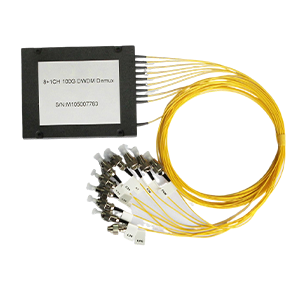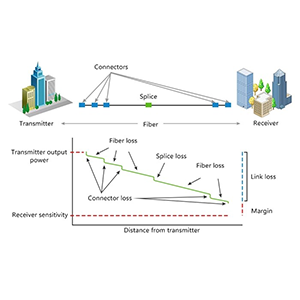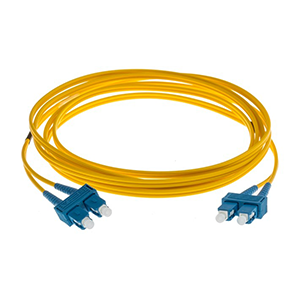With the rapid development of network technology, wide area networks (WAN) and WiFi play an important role in network applications. This article will compare the similarities and differences between these two technologies. We will first describe the basic characteristics and typical application scenarios of WAN, and then briefly introduce the working principle and application of WiFi.
Next, we will focus on the main differences between WAN and WiFi in terms of network coverage, connection methods, and application scenarios. Finally, we will explain their relationship in the network system and introduce common combined applications of the two, such as corporate headquarters WAN access and branch office WiFi coverage.
Definition of Wide Area Network (WAN)
A wide area network (WAN) is a network covering a wide geographical area, connecting multiple dispersed locations or networks. It supports long-distance data transmission and cross-regional communication, usually using optical fiber, satellite or wireless links to achieve global or regional network connections.
Basic features of WAN:
A wide area network (WAN) is a computer network with a wide coverage area. Its main features include:
(1) Wide geographical coverage:
- WAN can cross the geographical boundaries of cities, provinces and even countries to connect distant network locations.
- It is not limited to a building or campus like a local area network (LAN).
(2) Connecting dispersed network locations:
- WAN interconnects computer networks distributed in different locations to achieve remote communication.
- These network locations may be hundreds or even thousands of kilometers apart.
WAN applications in enterprises and the Internet:
WAN is widely used in enterprise networks and the Internet, mainly in the following aspects:
(1) Connecting headquarters and branches:
- Enterprises can use WAN technology to connect branches in different locations with the headquarters.
- This enables cross-regional information sharing and business collaboration.
(2) Providing Internet access services:
- Telecom operators use WAN infrastructure to provide users with Internet access services within the scope of the WAN.
- This allows users in different geographical locations to access Internet resources.
In short, WAN has the characteristics of wide coverage and connecting remote networks, and plays a key role in enterprise network construction and Internet service provision. It is one of the indispensable infrastructures in the modern information society.
Overview of WiFi Technology
WiFi technology is a wireless communication technology used to connect devices and networks within a short distance. It uses radio waves to transmit data, allowing devices such as mobile phones and laptops to access the Internet and share resources within the coverage of wireless access points.
How WiFi works:
WiFi (Wireless Fidelity) is a local area network (LAN) technology based on radio wave transmission. Its working principle is as follows:
(1) Based on radio wave transmission:
- WiFi uses 2.4GHz or 5GHz radio waves as the transmission medium.
- Wireless communication between devices is achieved through the propagation of radio waves in space.
(2) Establish a connection within a local area network:
- WiFi technology can establish wireless connections within a local area network.
- Data exchange between devices is achieved through wireless routers and wireless network cards.
Typical application scenarios of WiFi:
WiFi technology is widely used in the following scenarios:
(1) Intranet in home and office environments:
- WiFi networks can be deployed inside homes, offices and other places.
- User devices access network resources and the Internet through wireless connections.
(2) Wireless access in public places:
- Public places such as airports, cafes, and hotels provide WiFi Internet access services.
- Users can use this free or paid WiFi to access the Internet.
In short, WiFi technology uses radio waves to connect devices within the local area network. It is widely used in environments such as homes, offices and public places, providing users with a mobile and convenient network access experience.
Main differences between WAN and WiFi
WAN (Wide Area Network) is used to connect remote locations and networks and supports long-distance data transmission; while WiFi is a wireless technology used to connect devices in a local area and provide short-distance wireless network access. WAN is suitable for cross-regional communication, while WiFi is used to connect devices within a local area network. However, there are significant differences in many aspects:
Different network coverage:
- WAN can cover a wider geographical range and connect networks across cities, provinces, and countries.
- Whereas WiFi coverage is limited to local areas such as specific buildings or campuses.
Different connection methods:
- WAN is mainly based on wired circuits (such as optical fiber and dedicated lines) for data transmission.
- WiFi uses radio waves as a transmission medium to achieve wireless connection.
Different application scenarios:
- WAN is mainly used for wide area network interconnection, connecting network devices and places distributed over long distances.
- WiFi is more suitable for local area network connection, providing wireless Internet access services for devices limited to a certain area.
In short, although WAN and WiFi are both network technologies, there are significant differences in coverage, connection methods and application scenarios. WAN is more suitable for large-scale and long-distance network interconnection, while WiFi is more suitable for wireless connection needs in local areas. The two technologies have their own characteristics and play their respective advantages in different scenarios and needs.
The connection between WAN and WiFi
The connection between WAN and WiFi is that WiFi can be used as part of a WAN connection and connected to a wide area network through a wireless access point. WiFi provides local wireless network coverage, while WAN extends to a wider geographical area to achieve connection between the Internet and remote networks.
Their relationship in the network system:
(1) WiFi as the entrance to WAN:
- WiFi network provides a wireless access point for user devices to access WAN.
- Users can connect to WAN through WiFi and then access WAN resources.
(2) WAN provides an exit for WiFi networking:
- WAN provides an exit for WiFi network to connect to wide area resources such as the Internet.
- Wide area network provides wider connectivity for local WiFi network.
Typical combination application of the two:
WAN and WiFi technologies are often used in combination in the following application scenarios:
(1) WAN access to corporate headquarters:
- Corporate headquarters are connected to the Internet or other branches through WAN.
- WiFi networks are deployed inside the headquarters to provide wireless office access for employees.
(2) Branch office WiFi coverage:
- Enterprise branches use WAN to connect to the headquarters and deploy WiFi networks at the same time.
- Branch employees can access headquarters resources and the Internet through WiFi.
(3) User mobile office scenarios:
- When users are out or on the move, they can use WiFi access provided in public places.
- These WiFi networks rely on the WAN infrastructure provided by operators.
In short, WAN and WiFi complement each other in the network system, providing users with extensive network connection capabilities and mobile office convenience. The organic combination of the two is an important foundation for modern network applications.
Summary
WAN and WiFi technologies have their own advantages and play a complementary role in building a complete network solution. Our company has long been focusing on the research and development and application of network technology and has rich practical experience. We provide powerful WAN and WiFi products that are widely used in various network scenarios such as enterprises, operators, and large institutions.
Our products use industry-leading technical solutions and have achieved excellent levels in performance, reliability, and ease of management. At the same time, our team of engineers will provide you with professional demand analysis and solution design services to ensure that the deployed WAN and WiFi solutions can meet your actual needs to the greatest extent. Contact us now to learn more.
WAN and WiFi FAQ
No, WAN and WiFi are not the same. WAN refers to a network that spans large geographic areas and connects multiple LANs, while WiFi is a technology that provides wireless local area network (LAN) connectivity within a limited range, such as within a home or office.
A WAN (Wide Area Network) is a network that covers a broad geographic area, such as cities, countries, or even continents. It connects multiple local networks and facilitates long-distance communication.
WiFi is a wireless networking technology that allows devices to connect to a local area network (LAN) using radio waves. It provides wireless internet access and network connectivity within a limited range, typically within a building or a specific area.
WAN and WiFi can work together in a network setup. For example, a WiFi network within a home or office is connected to the internet via a WAN connection. The WAN provides internet access, while WiFi enables wireless connectivity for devices within the local network.
The primary function of a WAN is to connect multiple local networks over long distances, providing access to resources and services beyond the local network, such as the internet or remote office locations.
The primary function of WiFi is to provide wireless connectivity within a local area network (LAN). It allows devices such as laptops, smartphones, and tablets to connect to the network and access resources without the need for physical cables.
Yes, WiFi can be part of a WAN. For example, a WiFi network within a business or home connects to the internet through a WAN connection, allowing wireless devices to access the broader network and internet resources.
WAN: Covers large geographic areas, from cities to countries and beyond, connecting multiple networks over long distances.
WiFi: Covers a smaller, localized area, such as a home, office, or specific building, providing wireless connectivity within that range.
WAN: Devices such as routers, modems, switches, and leased lines are used to establish and manage WAN connections.
WiFi: Devices such as wireless routers, access points, and WiFi-enabled devices (e.g., laptops, smartphones) are used for WiFi connectivity.
WAN speed can vary greatly depending on the type of WAN connection (e.g., fiber, DSL) and distance. WiFi speed is influenced by factors such as signal strength, interference, and the WiFi standard (e.g., WiFi 5, WiFi 6). In general, WAN connections may offer higher speeds for long-distance communication, while WiFi provides convenient, high-speed connectivity within a local area.




